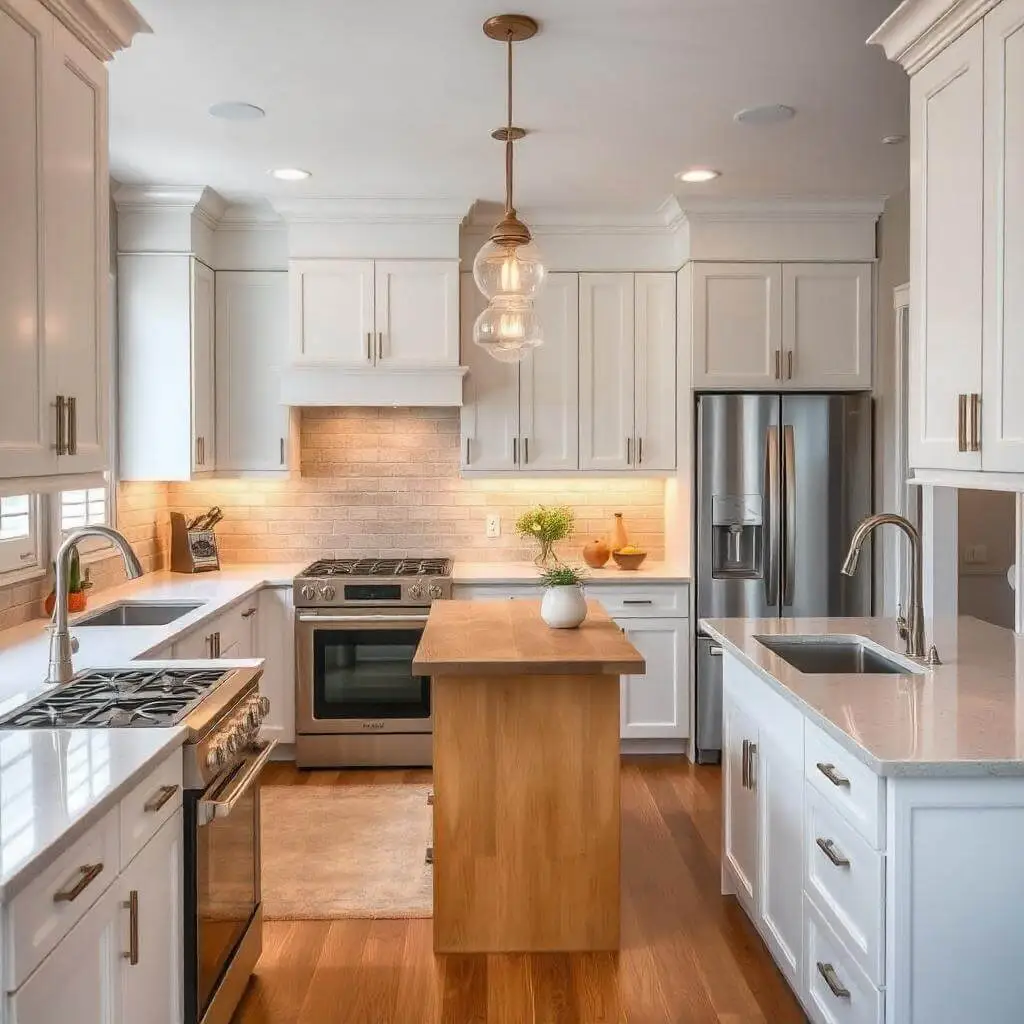
Kitchen remodeling is one of the most impactful home improvement projects a homeowner can undertake. Beyond enhancing the aesthetics and functionality of your home, a well-executed kitchen remodel offers a high return on investment, making it a popular choice for those seeking to boost their property’s value. The kitchen is often considered the heart of the home—a space where families gather, meals are shared, and memories are created. A thoughtfully planned remodel can significantly improve not only your home’s interior appeal but also the comfort and convenience of daily living.
That being said, it’s essential to understand that kitchen remodeling costs can vary dramatically. Several factors come into play, including the scope of the renovation, the quality and type of materials used, the complexity of the design, and the labor involved. Whether you’re planning a minor upgrade or a complete overhaul, knowing what to expect in terms of expenses can help you manage your budget more effectively and avoid surprises down the line.
In this guide, we’ll explore the key elements that influence kitchen remodeling costs, such as cabinetry, countertops, flooring, and appliances. We’ll also provide practical tips on how to prioritize your spending, find cost-effective alternatives without compromising on quality, and hire the right contractors to ensure a successful renovation. With proper planning and smart choices, you can create a beautiful, functional kitchen that meets your style and budget requirements.
Average Cost of Kitchen Remodeling
The cost of a kitchen remodel typically falls into three categories:
- Minor Remodels: $10,000 to $25,000 – Ideal for cosmetic updates like new paint, lighting, and hardware.
- Mid-Range Remodels: $25,000 to $50,000 – Includes upgrades like semi-custom cabinetry, new appliances, and improved layouts.
- High-End Remodels: $50,000 and above – Focuses on luxury materials, custom cabinetry, and professional-grade appliances.
Factors That Impact Kitchen Remodeling Costs
- Size of the Kitchen
The larger the kitchen, the more materials and labor are required, increasing overall costs. - Scope of the Project
- Cosmetic Updates: Painting, lighting, and new fixtures.
- Structural Changes: Altering layouts or knocking down walls adds complexity and cost.
- Materials and Finishes
- Cabinetry: Stock cabinets are affordable, while custom cabinets can account for 30-40% of your budget.
- Countertops: Options range from budget-friendly laminate to premium quartz or marble.
- Flooring: Vinyl and tile are cost-effective, while hardwood and natural stone are pricier.
- Appliances
Energy-efficient appliances are an excellent long-term investment, but their upfront costs vary based on brand and features. - Labor and Permits
Labor accounts for a significant portion of your budget, with professional contractors charging for installation, plumbing, electrical work, and permits.
Cost Breakdown by Percentage
- Cabinetry and Hardware: 30-40%
- Labor: 20-35%
- Appliances: 10-20%
- Countertops: 10-15%
- Lighting and Electrical: 5-10%
- Flooring: 7-10%
- Walls and Ceilings: 5-10%
Budgeting Tips for Kitchen Remodeling
- Set Priorities: Focus on elements that will have the most significant impact, like layout and functionality.
- Plan for Unexpected Costs: Include a 10-15% buffer for unforeseen expenses.
- Consider DIY: Tackle smaller tasks like painting or installing hardware to save on labor.
- Compare Quotes: Get multiple estimates from contractors to find the best value.
For more detailed advice on creating a budget for your kitchen renovation, check out this helpful guide on budgeting for home renovations.
Ways to Save on Kitchen Remodeling Costs
- Refinish Cabinets: Instead of replacing them, repaint or reface existing cabinets.
- Opt for Laminate Countertops: They mimic the look of stone at a fraction of the cost.
- Reuse Appliances: If your current appliances are functional, integrate them into the new design.
- Shop Sales: Purchase materials during seasonal sales or clearance events.
Conclusion
Kitchen remodeling costs can feel overwhelming, but understanding the breakdown helps you make informed decisions. By setting a realistic budget, prioritizing essential upgrades, and exploring cost-saving strategies, you can achieve a beautiful and functional kitchen without breaking the bank. Whether you’re planning a modest update or a full-scale remodel, investing in your kitchen is an investment in your home’s value and your family’s lifestyle.
If you want learn more about Kitchen Remodel check this article here
1 thought on “Understanding Kitchen Remodeling Costs: A Comprehensive Guide”